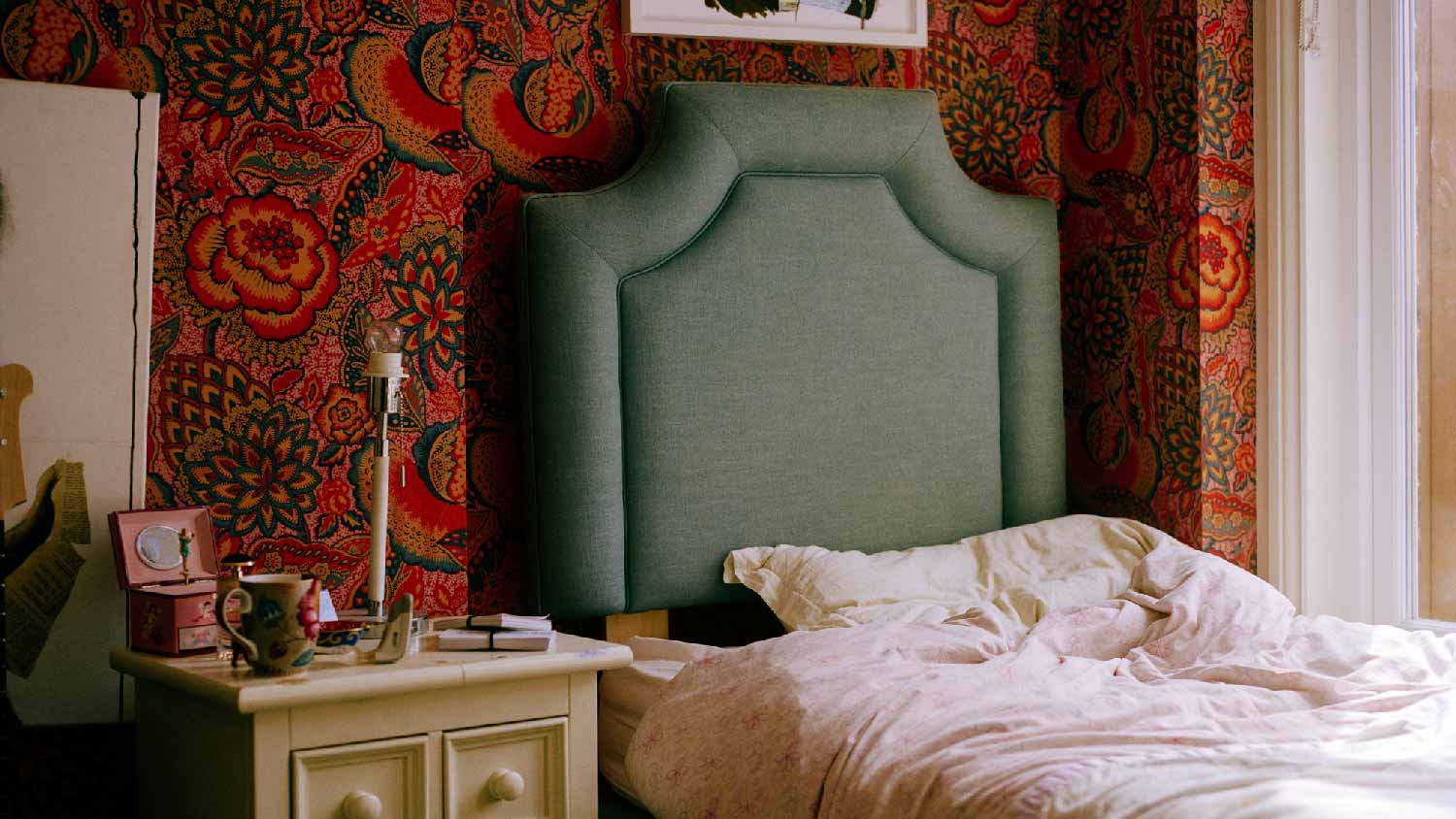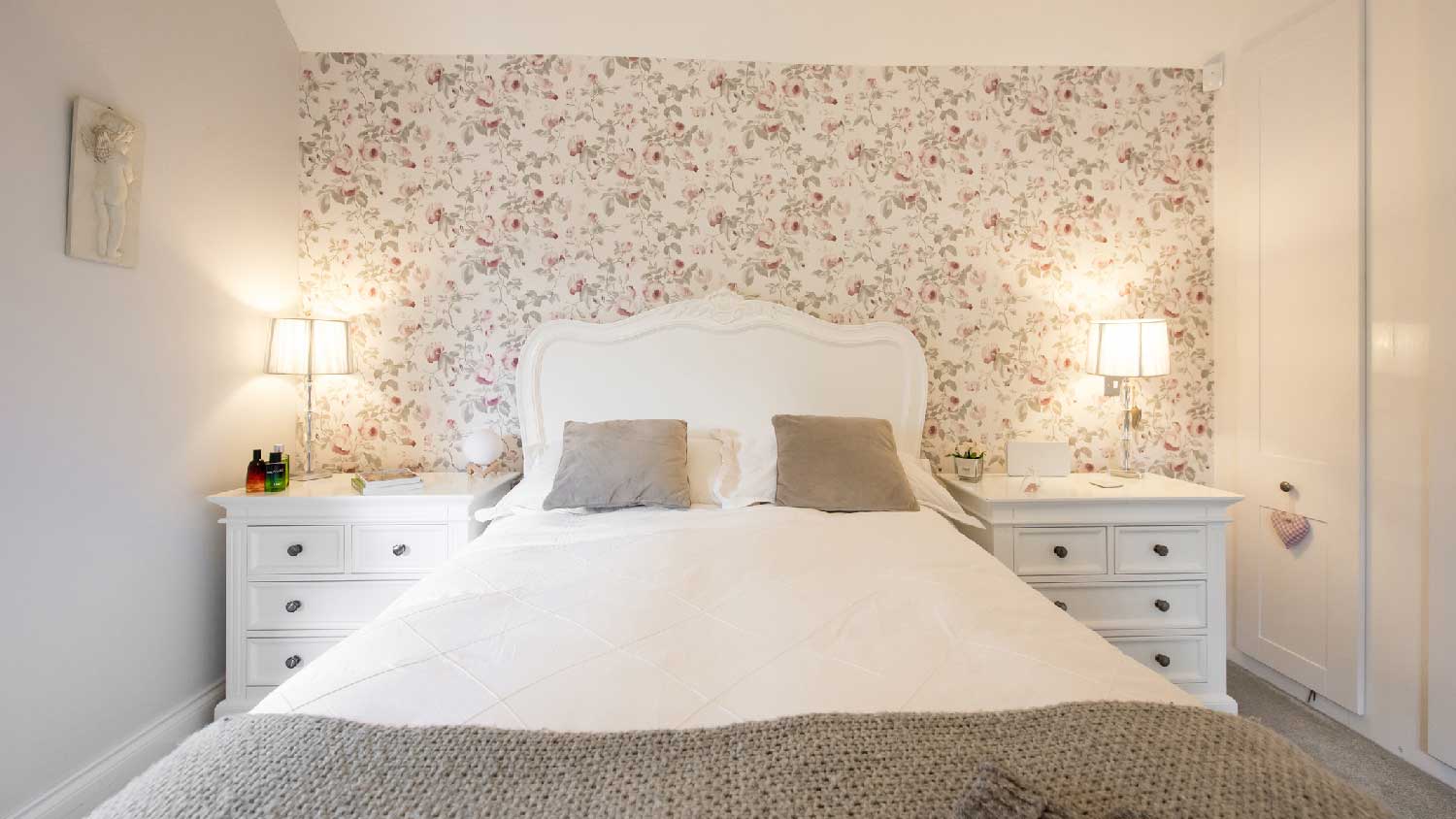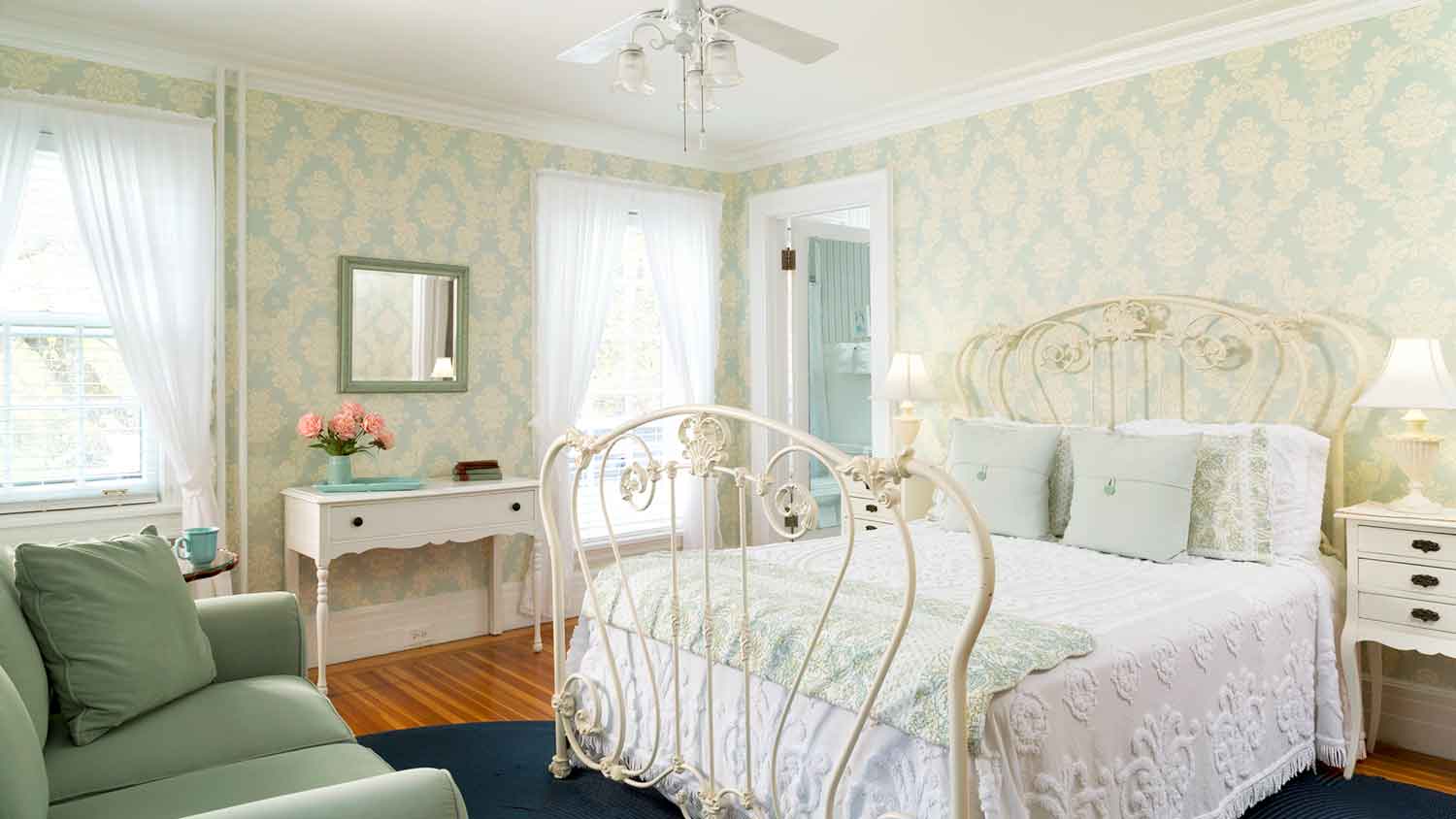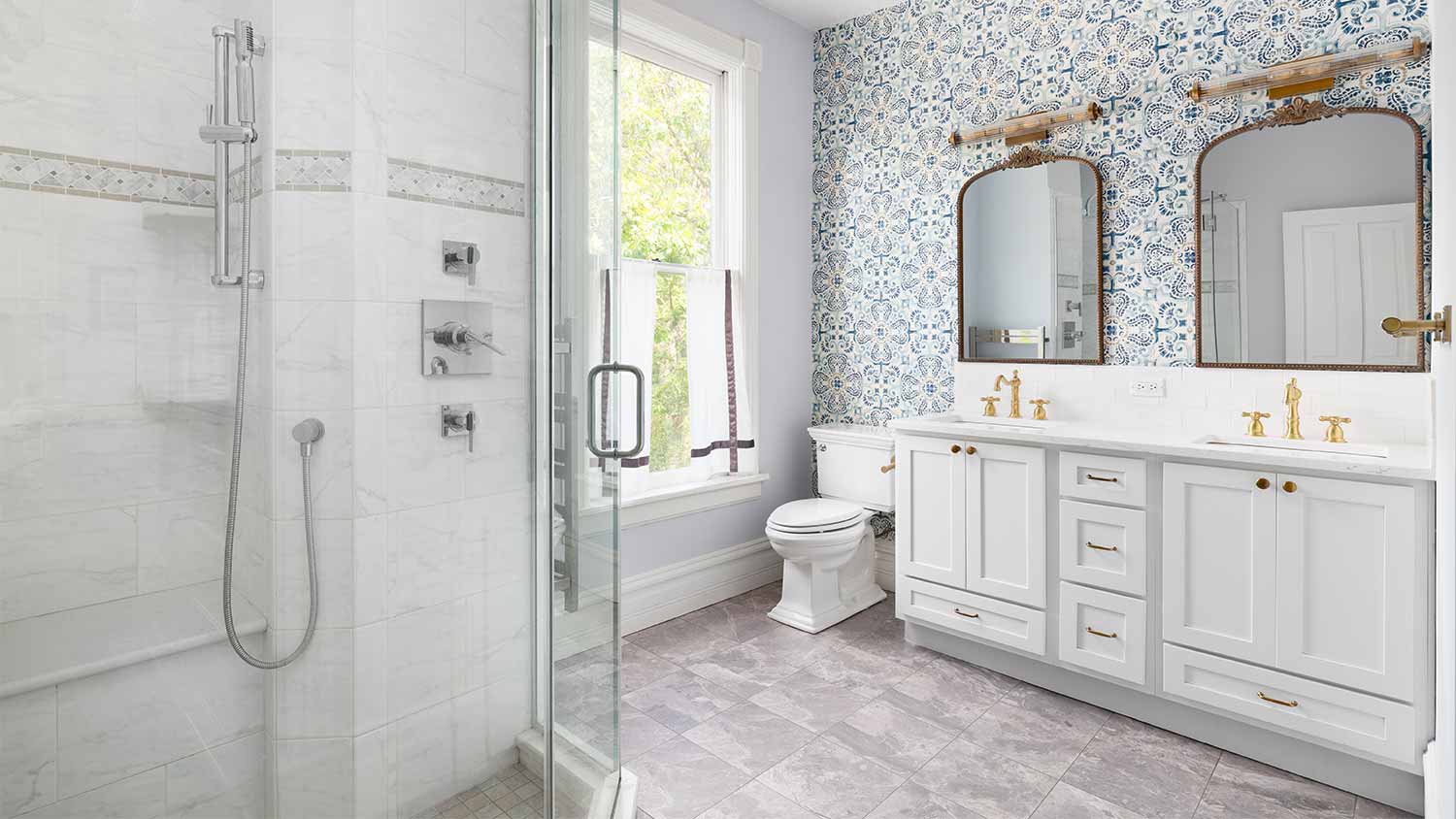How Do I Remove Wallpaper Paste?
You’re not stuck with old glue on your walls
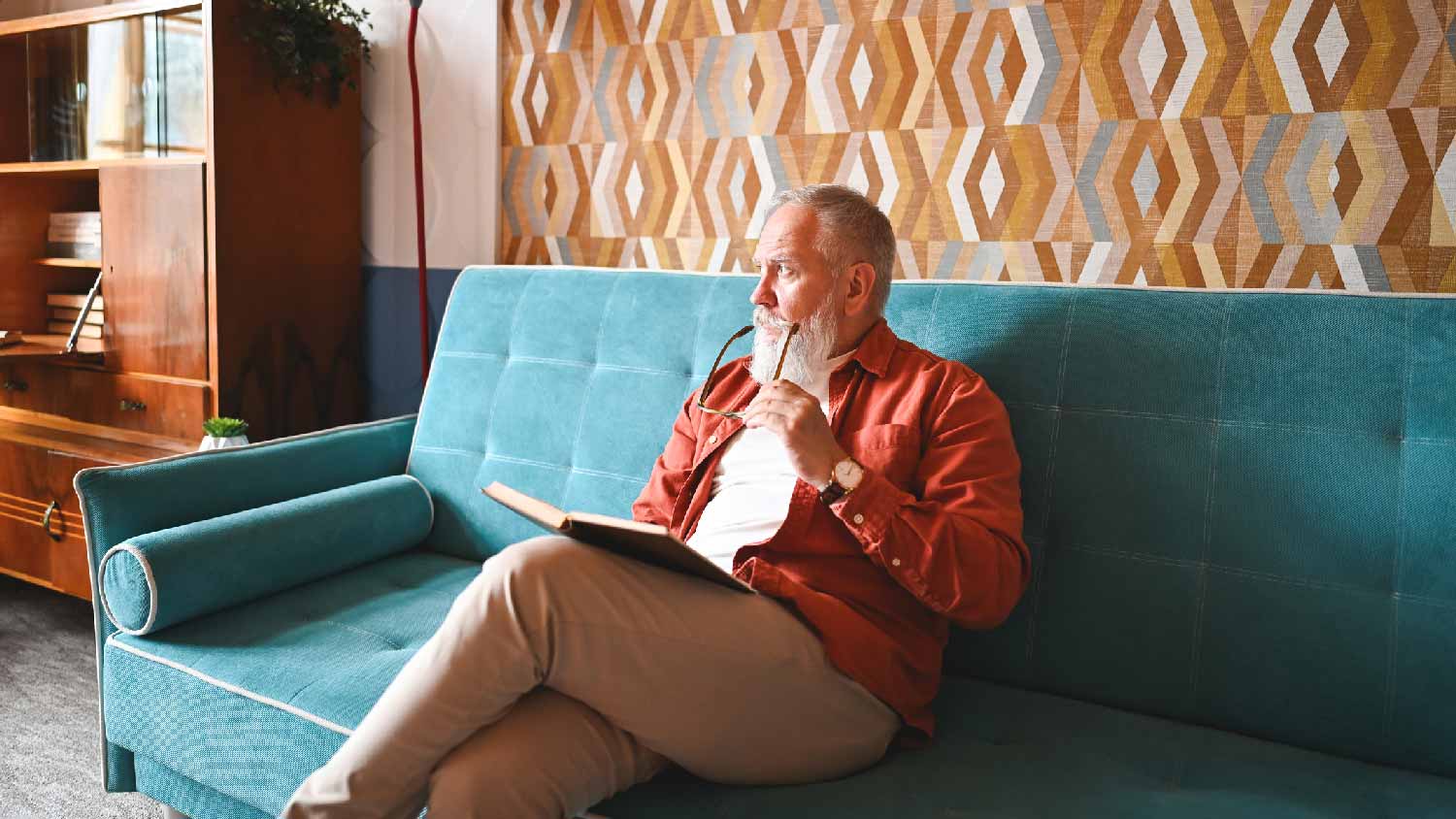

- Tarp
- Spray bottle
- Putty knife
- Abrasive sponge
- Bucket
- Painter’s tape
- Warm water
- Soap
- Baking soda (optional)
- Vinegar (optional)
You’ve ripped out the wallpaper in your fixer-upper, but now you’re left with splotches of yellowed glue that just won’t seem to come up. But if you want your new wallpaper or paint to look good, you’ll need to find a way to pry up that pesky paste. So, how do you remove wallpaper paste? We’ve got the knowledge you need to get rid of the glue.
Have a Pro Test for Lead and Asbestos
If you’re removing wallpaper paste from a house built before 1978, the paste or even the drywall underneath could contain lead or asbestos. Make sure you hire a pro to test for these compounds before moving forward. You may need pro asbestos removal and lead removal services before you can continue renovating the room.
Cover Floors, Outlets, and Openings
 Photo: skhoward / iStock / Getty Images Plus / Getty Images
Photo: skhoward / iStock / Getty Images Plus / Getty ImagesLay a tarp around the floors and tape off any outlets, window and door frames, and baseboards to keep these areas from getting wet as you work to remove the wallpaper paste. After sealing these areas, shut off the power to the room before you start spraying down the walls to minimize the risk of shock if you accidentally get any outlets wet.
Mix a Cleaning Solution
The key to removing old wallpaper glue is to get it wet again, and there are many different cleaning solutions to do this. Here are some cleaning solution options for this project:
1 gallon of warm water and soap
1 gallon of warm water, soap, and a tablespoon of baking soda
1 gallon of warm water, soap, a tablespoon of baking soda, and a cup of white vinegar
Commercial wallpaper glue remover
Commercial all-purpose cleaner
Spray a Section of the Wall
With the cleaning solution mixed and inside a spray bottle, you’re ready to get to work. Spray small sections, no more than 5-by-5 feet, until the glue is wet. Keep the spray bottle close by because you may need to re-wet a section if the glue dries while you’re scraping and cleaning it away.
Scrape Off the Glue
Once the glue interacts with water, it will begin to soften. Use a putty knife and firm (but not overly hard) pressure to scrape up the glue. This should help pull up larger strips of glue at a time.
Sponge Away Remaining Glue
 Photo: baona / iStock / Getty Images Plus / Getty Images
Photo: baona / iStock / Getty Images Plus / Getty ImagesFill a bucket with warm, soapy water. With the bigger sections of glue gone, you can follow up in the same section with a soapy, wet scrubbing sponge. Make sure to use the sponge’s abrasive side to loosen the wet glue.
Repeat Section by Section
This is the time-consuming part: You’ll need to repeat this process in small sections until the entire room is free of old wallpaper glue. Although you could wallpaper over the textured walls or even paint over the old glue, it won’t look as nice as if you take the time to remove all of the old paste.
To make this process more bearable, consider recruiting some friends with the promise of free pizza or turn on your favorite music in the background while you work.
Let the Walls Dry
Before you move on to priming and painting the walls or measuring for new wallpaper, make sure you let the walls fully dry after you’ve exposed them to water. Consider setting up a dehumidifier to help dry out the space.
DIY Wallpaper Paste Removal vs. Hiring a Pro
Removing wallpaper is an easy DIY project, and if you already have a putty knife, a sponge, and a bucket lying around, this project is very budget-friendly. You’ll pay $5 for soap or commercial cleaner and $10 to $30 for a tarp, depending on what size you need.
However, there’s much more to the cost of removing wallpaper than the actual money you’ll spend. Skill-wise, this is an easy project, but it takes a lot of time and patience to scrape an entire room’s worth of wallpaper glue.
If you have physical limitations or don’t have the patience, leave this job to a wallpaper installer near you. Similarly, if you think there may be lead or asbestos present, call a local asbestos tester to figure out your next steps.
Frequently Asked Questions
If you’re installing new wallpaper and have leftover glue, you can remove unused wallpaper paste from the bucket or pan it’s in by letting it dry. If it’s an oil-based paste, seal it in a plastic bag and throw it in the garbage. Otherwise, toss the leftover wallpaper paste in the trash. Although it’s water-soluble, don’t rinse unused wallpaper paste down the sink because it could dry in the pipes and cause a blockage.
To remove pre-pasted wallpaper, you’ll need to wet the wallpaper or steam it to loosen the paste on the back of the wallpaper. Spray the paper with water, then let it soak for 10 to 20 minutes. From there, you should be able to peel off the wallpaper. Then, you may need to follow up with a cleaning solution and a scraper to remove any remaining wallpaper paste on the walls.
To remove adhesive-backed wallpaper, you’ll need to soften the adhesive before you try peeling the wallpaper off the walls. You may wonder whether peel-and-stick wallpaper damages walls. It can depend on the removal method. Make sure to be patient and consider using a steamer, hair dryer, or adhesive remover to carefully take down adhesive-backed wallpaper.


